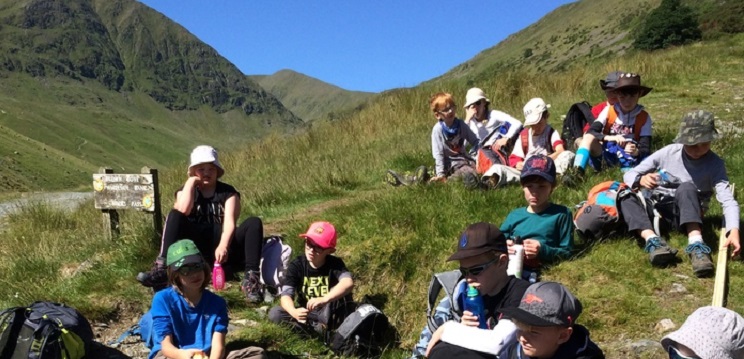
5 November 2021
Graham Watson is Cumbria’s John Muir Award Manager. He is hosted and supported in the role by the Lake District National Park Authority, enabling both residents and visitors to enjoy, learn about and care for the environment around them. Here he talks about some of the work he’s been doing over the past year.
It’s always a good time to encourage people to connect with nature and learn a little bit more about the landscape they love, but with the COP26 Climate Change summit well underway in Glasgow, I thought it an ideal time to take stock of the great green work we’ve been doing in the Lake District focused on climate.
We strongly believe if people who live in and visit the Lake District get to know more about the landscape and how it is cared for it will motivate them to take action on climate change.
Many schools in and visiting the Lake District get involved with the John Muir Award and we encourage all of them to take actions that reduce carbon emissions; improve habitats for nature recovery; and that look at how farming can become net zero carbon, be regenerative and help nature recovery.
One such school, Patterdale School, joined John Muir Trust staff to complete a survey on Glenridding Common, a farmed upland common, as part of the Moorland Indicators of Climate Change Initiative (MICCI).
The school is in the Ullswater Valley, right at the foot of the mountain of Helvellyn and Glenridding Common. Their term theme was Climate Change and Biodiversity, so they were keen to explore this in their local area, and how they are linked.
The day involved a mountain walk, but at every rest stop there was something to see – flowers to identify, regenerating juniper, lead mine archaeology, footpath drains to prevent erosion from the many people who walk here and magnificent views across the valley and neighbouring mountains.
Once at the peat bog survey site, the children found a wide variety of plants including heather, bog cotton, and the mysterious, carnivorous sundew which captures small flies on its sticky leaves to supplement its food.

Photo shows a close up of a sundew
After a number of tests were carried out by the pupils they recorded a healthy wet peat bog with a good covering and variety of plant life, and learnt that this showed a good level of biodiversity, which is using up carbon dioxide from the air and therefore working to slow down climate change.
This data is then sent into a central data bank and contributes to building up a picture of the health of our peat bogs, which in turn determines how much carbon they are storing, drawing down, or indeed losing where they are damaged.
Many people are introduced to the Lake District on walks or adventure holidays guided by skilled mountain leaders who will enhance the experience with information about the landscape – how dry stone walls are built, what lives and grows here, what type of sheep are on the hills for example. At Helvellyn on Glenridding Common we’ve recently introduced training for such leaders which looks at land management and how it relates to current social priorities: the climate and nature emergencies, the increased importance of wild places for people’s wellbeing, and preserving local community and culture.
Referencing recent research from Natural England we include how land management is inextricably linked to carbon storage and take up, or indeed loss. We pose the question ‘How can land be managed to best manage carbon storage and sequestration?’ and we relate this to the specific habitats found on our walk.

Photo shows outdoor leaders and university students learning about land management in the Lake District.
This year 15 outdoor activity leaders, and another 24 university students of Outdoor Studies, took part with the aim of increasing their knowledge of the opportunities and challenges of land management for nature, people and the economy. It’s great to show people what that means in practice. This in turn helps them inform the public and encourage them to use wild places like Helvellyn and the Lake District fells responsibly, and also to think about how they are managed.
The John Muir Award is a national environmental initiative of the John Muir Trust which encourages participants to enjoy wild places and have a role in caring for them. In Cumbria it is managed by John Muir Award Manager, Graham Watson, hosted and supported in the role by the Lake District National Park, enabling both residents and visitors to enjoy, learn about and care for the environment around them.
Started in 2011, this year we celebrated our 10 year Anniversary! We’re very proud that in that time, through our wonderful Providers, we’ve enabled more than 26,000 people to achieve their John Muir Award.
If you want your school to get involved with the John Muir Award, or have questions about any of the activity mentioned above please visit our LDNP John Muir Award webpage or get in touch through [email protected]